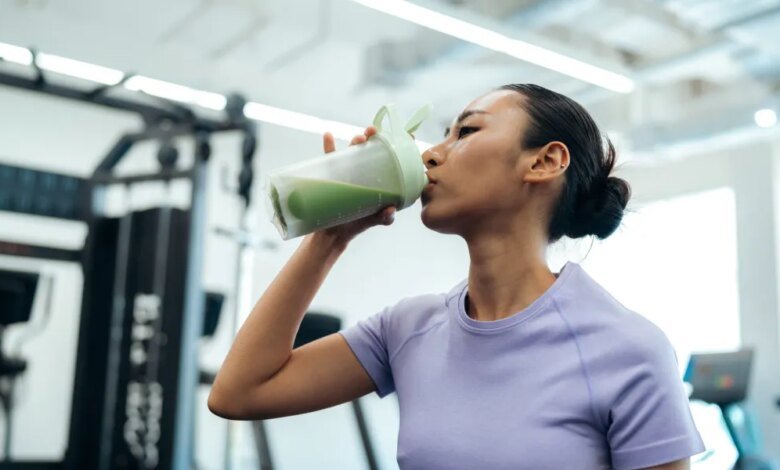The protein craze is heavy metal, literally: bombshell investigation finds unsafe lead amounts in two-thirds of top powders for sale

You can never have too much of a good thing, as the saying goes. For several months, Americans have been treating protein this way. What started as a supplement used mostly by “gym bros and fitness-obsessed teens,” said Paris Martino, a journalist at Consumer Reports, has turned into a mass-market wellness movement. There are protein pastas, protein cereals, protein soft drinks and even cold protein foam from Starbucks.
But a comprehensive Consumer Reports (CR) investigation published on October 14 reveals an uncomfortable truth: Much of this protein comes contaminated with toxic heavy metals.
Martino led CR’s new round of testing on protein powders and shakes, the first of its kind since 2010. At the time, CR found “regarding heavy metal levels,” but the category still seemed niche. Now, she said luck“Everyone seems to be eating protein powder, and this kind of protein mania has emerged where people seem to think that more protein can always be better.”
This shift was exactly why CR decided to look again.
“We wanted to take a look at this industry again, now that it’s gotten so big,” Martino said. “And surprise, surprise, we found that the risks seem to be growing along with the industry.”
“We advise against daily use”
CR tested 23 of the most popular ready-to-drink protein powders and shakes sold in the United States. The results were alarming: More than two-thirds of the products contained more lead in a single serving than CR food safety experts say is safe to consume in a single day. Some had 10 times that amount. One powder — Vegan Mass Gainer from Naked Nutrition — contains 7.7 micrograms of lead per serving, which is 1,572% of the CR level of concern. Among the best sellers, the Huel Black Edition — a favorite among the tech bros — registered 6.3 micrograms of lead, or 1,288% of the maximum CR.
Chemist Tunde Akinleye, who led the testing, concluded in the report: “We advise against daily use of most protein powders, as many of them contain high levels of heavy metals and none are necessary to meet your protein goals.”
Martino herself was surprised not only by the levels, but also by the sheer consistency of the contamination.
“I was surprised that protein powders contain noticeable and alarming amounts of lead,” she said. “I was surprised that more than two-thirds of the products we tested contained high levels of lead.”
What concerned her most was how these products were used: Unlike candy or hot chocolate, the other products CR tested, “the core user base often takes these products daily, or multiple times a day, which presents a real risk.”
What’s worse is that the contamination has increased and not improved since the previous CR test. “We found higher levels of lead and a higher average level of lead,” Martino explained. “Even…the worst product we tested this time contained twice as much lead as the worst product we tested 15 years ago.” You might intuitively expect that safety standards will evolve as the industry matures, “but that’s not always the case,” she said.
She said many readers assume that pollution must come from negligent manufacturing, but the truth is more complex. The problem starts at the source: Plant-based protein powders were overwhelmingly the most contaminated category, with lead in these products averaging about nine times the amount found in dairy proteins like whey.
Why? Martino explained that plants act like sponges. They absorb everything in their surroundings; If there is lead from cadmium in the soil, they will absorb those metals as well.
CR found that contamination can also intensify during processing.
“Protein supplements are highly processed foods,” Martino explained. She stressed that she wasn’t ideological about “processing” being a buzzword, but just a fact: Machines isolate the pea plant and process it in several steps to turn the plant into a powder.
Organization status
If heavy metals in food seem illegal, that’s another widely held assumption that Martino shot down during her reporting.
The state of regulation of the protein powder industry was one of the things that “really shocked” her. Because protein powders are considered dietary supplements, they typically operate in a regulatory gray area with limited oversight before they are released to the market.
There is no federal limit on the amount of lead allowed in protein powder. Companies are expected to self-regulate, and many do not disclose any tests at all. The FDA doesn’t approve dietary supplements before they can be sold: “It’s a weird setup,” Martino said.
How strange? The FDA inspected only 600 of the 12,000 registered supplement manufacturers last year. Only 90 of these inspections were foreign factories, even though much of the U.S. supplement supply chain passes through factories abroad.
This regulatory vacuum leaves consumers blind. Some brands point to NSF safety certifications as proof of purity, but CR notes that NSF allows 10 micrograms of lead per day — 20 times CR’s maximum allowance of 0.5 micrograms.
“CR takes a really conservative approach…there is no known safe amount of lead,” Martino said. She noted that some companies can produce products with very low levels of lead, and others, “if not all,” should do so.
Even as the science developed, Martino was steadfast on one point: People don’t need protein powder.
“Many people don’t need as much protein as they think,” Martino said. “Unless you belong to somewhat special groups — certain types of athletes, people who may be pregnant, older adults — you probably only need 0.8 grams of protein per kilogram of body weight per day…which is easier to get by just eating whole foods.”
Harvard Health agrees that the recommended amount of protein each day is just 0.8 grams per kilo of body weight. This means a 140-pound adult only needs about 53 grams of protein per day, an amount that can easily be reached with a cup of Greek yogurt and a chicken breast, or a serving of tofu with beans.
The recommended daily allowance (RDA) is not a target to be exceeded, but rather the minimum required to avoid deficiency, and most Americans exceed it without trying: On average, protein already makes up about 16% of daily calories in the US diet, which is higher than the recommended percentage (10%).
The problem, she noted, is cultural: “We basically have this kind of health halo around protein.”
Protein has become a branding tool, an excuse to turn processed foods into health tools.
“Putting protein on something doesn’t make it a shortcut to health,” she said. “The unexciting advice is actually a shortcut to health — eat whole foods — but that’s less fun than getting maximum protein.”
2025-10-16 18:57:00




